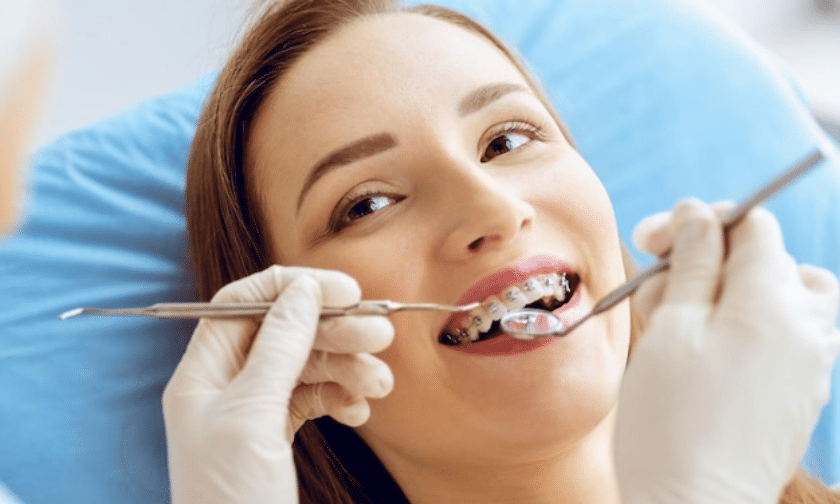The Only Guide to Legacy Orthodontics
Table of ContentsGetting The Legacy Orthodontics To WorkExamine This Report about Legacy OrthodonticsLegacy Orthodontics Fundamentals ExplainedGetting My Legacy Orthodontics To WorkSome Of Legacy Orthodontics
In addition, we use flexible therapy timetables, flexible payment alternatives and an enjoyable, delightful experience.An orthodontist is a dentist trained to detect, avoid, and deal with teeth and jaw irregularities. They fix existing conditions and are educated to identify issues that may establish in the future. Orthodontists deal with people of any ages, from children to grownups. People usually connect a perfect smile with healthiness.
Malocclusion, or misaligned teeth, can result in oral issues, including dental caries, gum condition, and hard or uncomfortable chewing. Yet not everybody is birthed with straight teeth. If you have a bad bite or huge areas in between your teeth, you may wish to seek advice from a dental professional focusing on orthodontic treatment.
Fascination About Legacy Orthodontics
( Picture Credit History: DigitalVision/Getty Images) Orthodontists make use of fixed and detachable dental devices, like dental braces, retainers, and bands, to change the setting of teeth in your mouth. Orthodontic therapy is for oral abnormalities, consisting of: Uneven teethBite issues, like an overbite or an underbiteCrowded teeth or teeth that are too much apartJaw misalignmentThe objective of orthodontic treatment is to boost your bite.
A healthy and balanced bite ensures you can eat, eat, and talk appropriately. While you could consider orthodontists as primarily for kids or young adults who need dental braces, they can remedy dental troubles at any kind of age. Orthodontists go to university, oral college, and orthodontic school. After graduation, they invest 2 or 3 years in an orthodontic residency program.
All orthodontists are dental professionals, however not all dentists are orthodontists. Orthodontic residency programs supply intensive, focused guideline for dental specialists. They focus on two locations: Exactly how to effectively and securely move teeth How to appropriately assist advancement in the teeth, jaw, and faceOnce an orthodontist has actually finished training, they have the choice to become board licensed.
Top Guidelines Of Legacy Orthodontics
Misalignment, or malocclusion, is the most common factor people see an orthodontist. It is genetic and is the outcome of dimension differences in between the top and reduced jaw or between the jaw and teeth. Malocclusion causes tooth congestion, a twisted jaw, or irregular bite patterns. Malocclusion is normally treated with: Your orthodontist attaches steel, ceramic, or plastic square bonds to your teeth.
Some people require a headgear to aid relocate teeth into line with pressure from outside the mouth. A retainer is a custom-made tool that keeps your teeth in area.
They can develop extra space in the mouth without having to draw teeth. Orthodontists make use of cables, medical screws, or plates to sustain your jaw bone.
You might need to see an orthodontist if you have: Crowding or not enough room for every one of your teethOverbite, when your upper teeth come over your base teethUnderbite, when your bottom teeth are too far forwardSpacing or issues with gapsCrossbite, which is when your top teeth fit behind your bottom teeth when your mouth is closedOpen bite or a vertical space in between your front base and upper teethMisplaced midline, when the facility of your base and upper teeth don't line up Dealing with a dental malocclusion can: Make biting, chewing, and talking easierImprove the symmetry of our face and your general appearanceEase pain from temporomandibular joint problemsSeparate your teeth and make them much easier to cleanse, aiding avoid tooth decay or tooth cavities It's typically a dental professional that initially notifications misaligned teeth throughout a routine test.
Our Legacy Orthodontics Statements

During your first orthodontic appointment, you'll likely have: A dental examPhotos taken of have a peek at this site your face and smileDental X-raysPanoramic (360 level) X-rays of your face and headImpressions to develop molds of your teethThese tests will assist your orthodontist recognize how to continue with your therapy. clear braces. An orthodontist is a dental professional who's had training to treat your teeth and jaw
Orthodontists may do surgical treatment, exams,X-rays,and more to aid you achieve a much more comfortable, healthier smile. An orthodontist is concentrated on your bite, so something like a chipped tooth would be handled by a dental professional. Orthodontists are dental experts yet not all dental practitioners are orthodontists. Orthodontists are focused on your bite, or the way your teeth meshed, and the straightness of your teeth.
Ever asked yourself exactly how celebs always seem to have perfectly lined up teeth? Orthodontists are oral specialists that concentrate on fixing abnormalities in the teeth and jaws.
The 10-Second Trick For Legacy Orthodontics

, orthodontists have a varied toolkit at their disposal. These reliable dental braces use a system of brackets bound to the teeth and connected by wires.
Clear aligners, like Invisalign, are a popular alternative for patients looking for a more very discreet therapy alternative. These removable trays are personalized to progressively change the teeth's placement. Headwear may be used together with dental braces or aligners to use additional targeted forces, particularly for correcting jaw discrepancies. In instances of slim jaws, palatal expanders can be used to create room for appropriate tooth positioning.